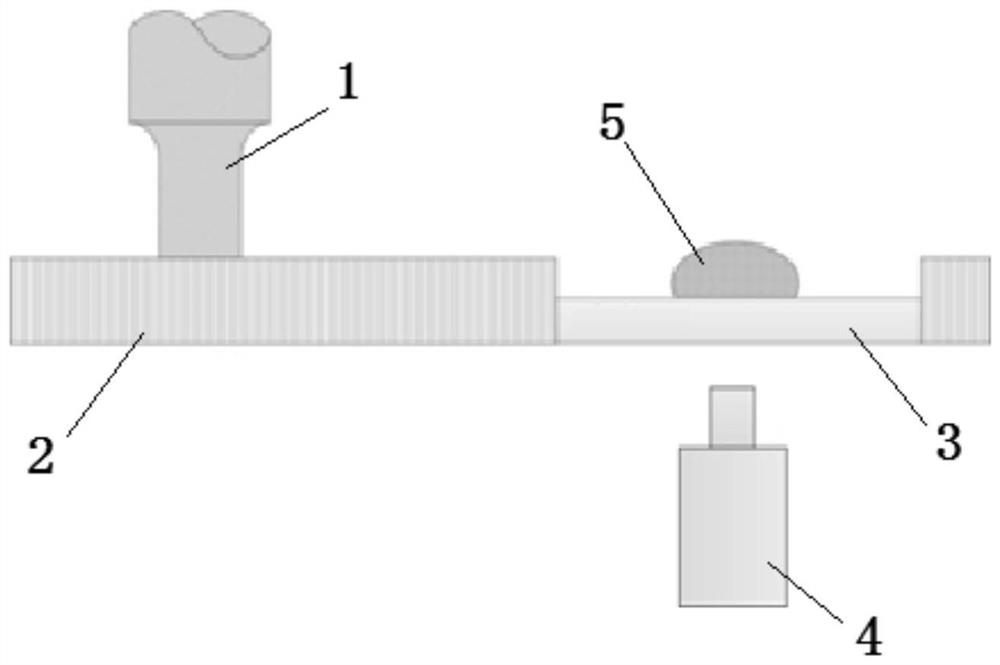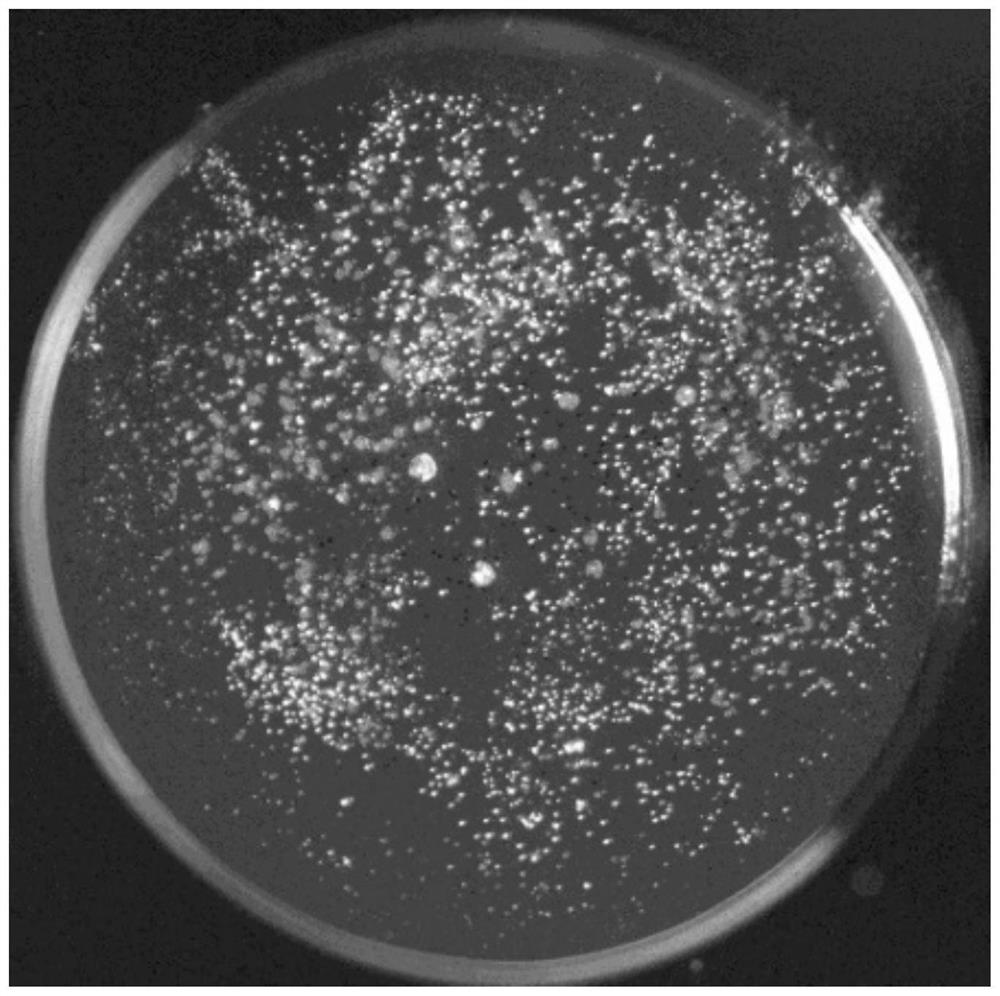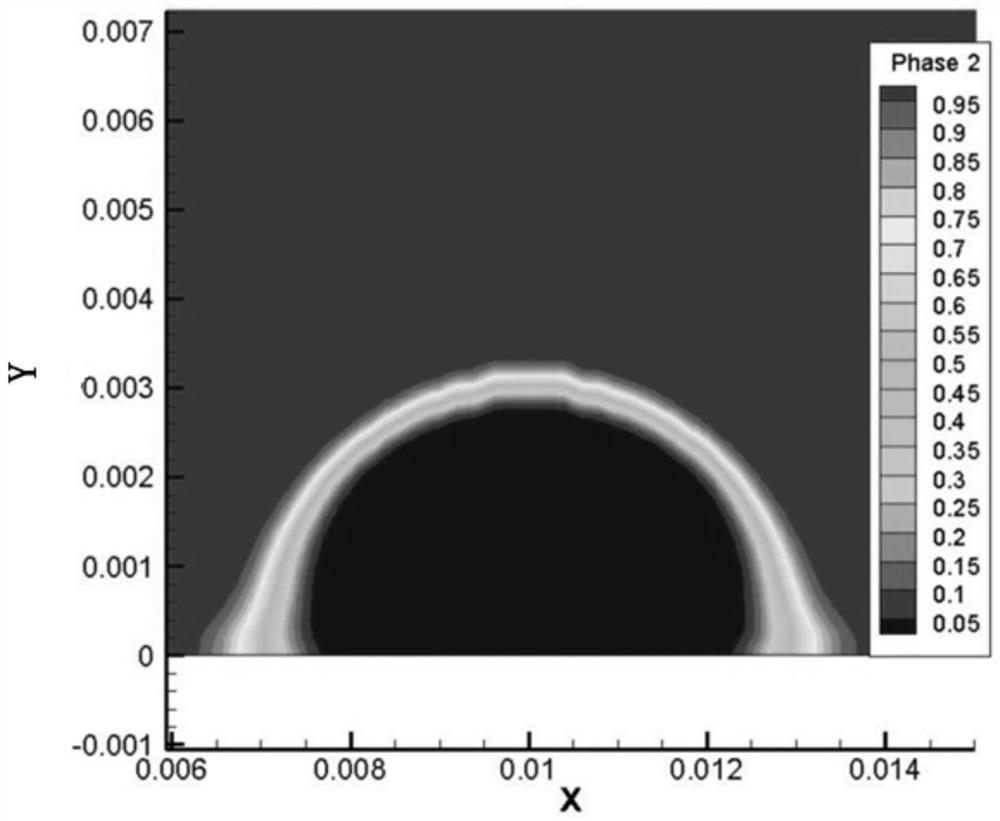Method of determining cavitation threshold of liquid metal
A liquid metal and cavitation threshold technology, applied in design optimization/simulation, color TV parts, TV system parts, etc., can solve problems such as the inability to determine the liquid metal cavitation threshold
- Summary
- Abstract
- Description
- Claims
- Application Information
AI Technical Summary
Problems solved by technology
Method used
Image
Examples
specific Embodiment approach 1
[0033] Specific Embodiment 1: In this embodiment, a method for determining the cavitation threshold of liquid metal is carried out according to the following steps:
[0034] 1. Put the droplet of the liquid metal to be tested which is liquid at normal temperature on the transparent glass of the device for determining the cavitation threshold of the liquid metal;
[0035] Or place a non-liquid metal at normal temperature on the transparent glass of the liquid metal cavitation threshold device, and then heat the metal to a liquid state, which is the liquid metal to be tested;
[0036] 2. Turn on the ultrasound, and use a high-speed camera to shoot the spreading process of the liquid metal droplet to be tested;
[0037] 3. Select the photo taken in step 2, and record the width and shooting time of the liquid drop front without acoustic cavitation in the photo;
[0038] 4. Use finite element software to simulate the spreading process of the liquid metal to be tested;
[0039] 5....
specific Embodiment approach 2
[0040] Embodiment 2: The difference between this embodiment and Embodiment 1 is that the device for determining the liquid metal cavitation threshold includes an ultrasonic tool head 1, a base material 2, a transparent glass 3 and a high-speed camera 4, wherein the transparent glass 3 replaces Part of the base material 2, and the transparent glass 3 is closely attached to the base material 2, the ultrasonic tool head 1 is closely attached to the upper surface of the base material 2, the liquid metal 5 to be tested is placed on the transparent glass 3, and the high-speed camera 4 is located on the transparent glass 3, the lens of the high-speed camera 4 is set directly below the liquid metal 5 to be tested, and faces the liquid metal 5 to be tested. Others are the same as in the first embodiment.
specific Embodiment approach 3
[0041] Embodiment 3: This embodiment is different from Embodiment 1 or Embodiment 2 in that: the base material is pure aluminum. Others are the same as in the first or second embodiment.
PUM
 Login to View More
Login to View More Abstract
Description
Claims
Application Information
 Login to View More
Login to View More - R&D
- Intellectual Property
- Life Sciences
- Materials
- Tech Scout
- Unparalleled Data Quality
- Higher Quality Content
- 60% Fewer Hallucinations
Browse by: Latest US Patents, China's latest patents, Technical Efficacy Thesaurus, Application Domain, Technology Topic, Popular Technical Reports.
© 2025 PatSnap. All rights reserved.Legal|Privacy policy|Modern Slavery Act Transparency Statement|Sitemap|About US| Contact US: help@patsnap.com



